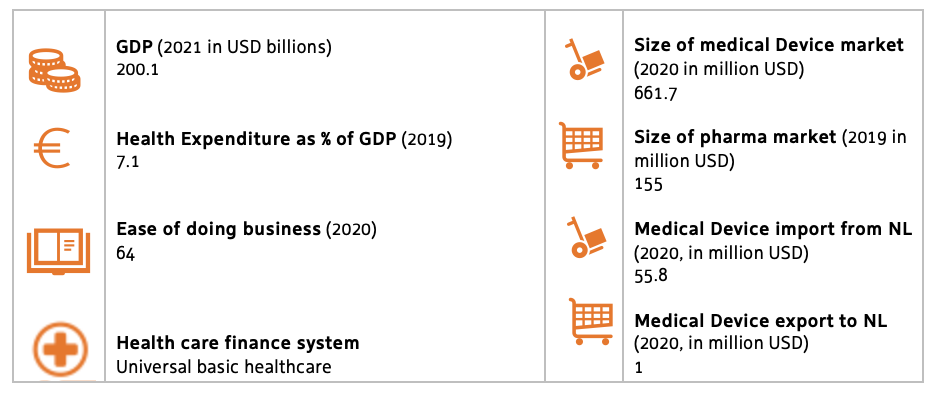In late 2017, official reforms were passed to transform the Ukrainian health care system in a system that delivers patient-oriented health care. There has been a stable growth in health expenditure since the last 5 years. Allocation of funds changed and payments were done on the basis of healthcare output with a case-based, global budget. The idea is that money follows the patient. Family doctors were introduced in the system and primary care, palliative care, and emergency medical care are 100% funded by the state. Public hospitals became autonomous and private providers were included in the system. In 2021, the new healthcare system became fully operational. Alongside with these transformations, there exists a pressure towards increased efficiency in health care institutions. Managerial capacity needs to be enhanced and network optimisation needs to be implemented. Besides, there is looked with increasingly interest towards digital solutions and telemedicine.
During the war, many healthcare facilities have been destroyed or badly damaged. In addition, additional injuries and fatalities occur due to the war, both to military and civil persons, causing physical and mental injuries. This leads to a changing demand in healthcare service, e.g. increased demand for rehabilitation. Moreover, due to the internal displacement of people, the demand for healthcare in certain regions, especially in the Eastern and Western regions of Ukraine, has surged.
The World Bank’s Ukraine Rapid Damage and Needs Assessment describes the estimated damage to the health sector and the needs of the sector to cover the accumulated infrastructure damage and losses, as well as the scale-up of critical health services for the population in Ukraine. In July 2022, this has been estimated to be at least US$15.1 billion. Of these presented needs, US$1.2 billion is urgently needed in the immediate/short term.
From the perspective of the Netherlands the following market trends present before February 2022 in Ukraine are of interest:
Before the start of the war in February 2022, priority services in Ukraine that have high prices but only a limited supply in the country include:
- Cancer diagnostics
- Rehabilitation
- Palliative and end of life care
- Stroke treatment
- Mental health
As described, the needs of the healthcare system have changed, and are continuously changing dependent on the situation on the ground. The major areas of needs are in the building of new infrastructure using a building back better approach and the immediate recovery of facilities that are partially damaged. In addition, as significant expansion of rehabilitation and mental health services is needed, to address the impacts of the war.
Regional priorities
Local authorities are important new players in the transited Ukrainian health system. They are the responsible entities for hospital (re)construction, capital investment, PPP equipment, consulting, digital solutions and hospital management. There are differences between level of development and innovativeness between regions and cities in Ukraine. Kiev, Lviv, Poltava and Vinnytsia.
The oblasts in which damage is most severe and needs of the healthcare system recovery are highest are Donetska, Luhanska, Kharkivska and Kyivska.

